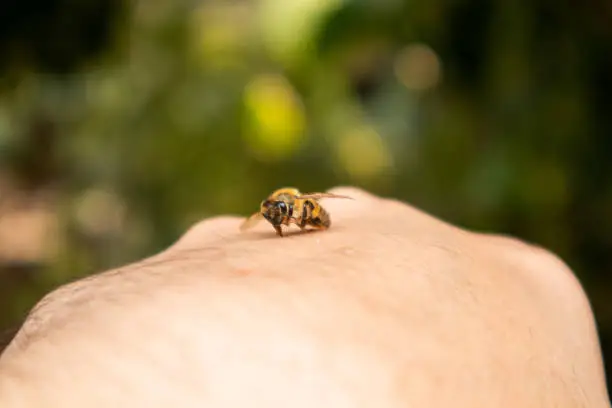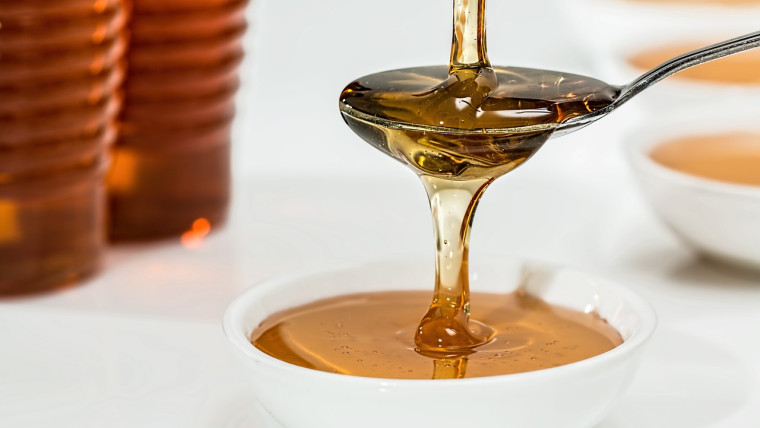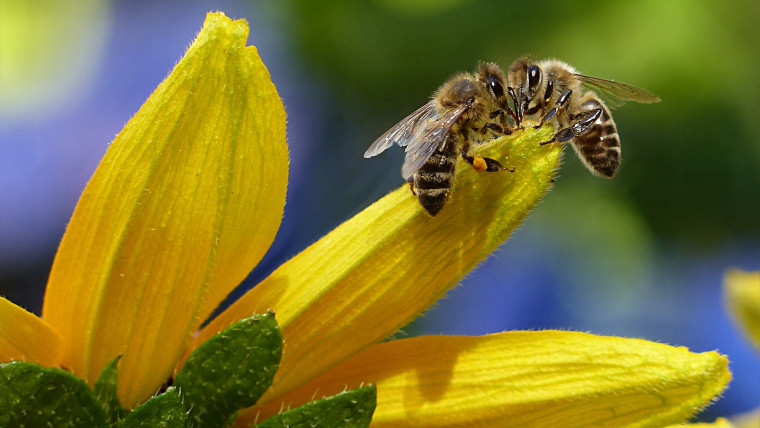
Bees play a crucial role in our ecosystem, pollinating plants and ensuring the biodiversity of our planet. However, the beauty of their existence sometimes comes at a painful price when we find ourselves on the wrong end of a bee sting. For many, the immediate reaction is a sharp pain followed by swelling and redness. While bee stings are usually harmless, they can cause discomfort and, in some cases, trigger allergic reactions. In such instances, it’s crucial to seek immediate medical attention. For those with milder reactions, there is a treasure trove of natural remedies that may provide relief. In this article, we explore various natural remedies for bee sting relief and delve into the science behind their effectiveness.
1. Honey: Nature’s Golden Elixir
Ironically, the very substance bees produce can be a balm for their sting. Honey has long been recognized for its antibacterial and anti-inflammatory properties. Applying a small amount of raw, locally sourced honey to a bee sting can help soothe the pain and reduce inflammation. The sticky consistency of honey also helps create a protective barrier over the wound, preventing infection. It’s important to use raw honey, as processing can diminish some of its therapeutic properties.
2. Baking Soda: A Kitchen Cupboard Hero
Baking soda, or sodium bicarbonate, is a versatile household ingredient with various uses, including bee sting relief. When mixed with water to form a paste, baking soda can help neutralize the acidity of bee venom, providing relief from pain and itching. Its alkaline nature can also help reduce swelling. Applying a thick paste of baking soda to the affected area and leaving it on for 15-20 minutes before rinsing can be an effective remedy.
3. Ice Pack Therapy: Cooling the Burn
One of the simplest and quickest remedies for bee stings is the application of an ice pack. The cold helps numb the area, reducing pain and swelling. Additionally, ice constricts blood vessels, slowing down the spread of venom. Wrapping an ice pack in a thin cloth and gently applying it to the sting site for 10-15 minutes can bring quick relief. It’s crucial not to apply ice directly to the skin, as it can cause frostbite.
4. Aloe Vera: Nature’s Cooling Gel
Known for its cooling properties, aloe vera is a popular remedy for various skin irritations, including bee stings. The gel inside the succulent leaves of the aloe plant can be applied directly to the sting site. Aloe vera not only helps reduce pain and inflammation but also promotes healing. Its moisturizing effect can prevent the skin from drying out and cracking, minimizing the risk of infection.
5. Lavender Essential Oil: Aromatic Relief
Lavender essential oil is not only prized for its calming scent but also for its potential healing properties. Mixing a few drops of lavender oil with a carrier oil, such as coconut or almond oil, and applying it to a bee sting can provide relief. Lavender oil is known for its analgesic and anti-inflammatory effects, making it a soothing option for those looking to alleviate the discomfort of a bee sting naturally.
6. Tea Tree Oil: Nature’s Antiseptic
Tea tree oil has earned a reputation for its potent antiseptic and anti-inflammatory properties. Diluting a few drops of tea tree oil with a carrier oil and applying it to a bee sting can help prevent infection and reduce swelling. However, it’s crucial to perform a patch test before using tea tree oil, as some individuals may be sensitive to its concentrated form.
7. Basil: More Than a Culinary Herb
Basil, commonly used in cooking, also has medicinal properties that can be harnessed for bee sting relief. Crushed basil leaves can be applied directly to the sting site, providing a cooling effect and potentially easing pain. The natural compounds in basil, including eugenol, possess anti-inflammatory properties that may contribute to its therapeutic effects.
8. Witch Hazel: Nature’s Astringent
Witch hazel, derived from the bark and leaves of the witch hazel shrub, has long been used as a natural remedy for skin ailments. Its astringent properties make it effective in reducing inflammation and soothing pain. Applying a small amount of witch hazel to a bee sting using a cotton ball can provide relief. Witch hazel is readily available at pharmacies and health food stores.
9. Cucumber: Cooling and Hydrating
Cucumber, with its high water content, can be a simple yet effective remedy for bee stings. Slicing a cucumber and placing the slices on the sting site can provide a cooling sensation and help reduce swelling. The hydrating properties of cucumber can also prevent the skin from drying out, promoting faster healing.
10. Oatmeal: Soothing Bath Soak
For those who have experienced multiple bee stings or have widespread discomfort, an oatmeal bath can be a luxurious and soothing remedy. Adding finely ground oatmeal to a warm bath can help relieve itching and inflammation. Oats contain compounds that have anti-inflammatory properties, making them a natural choice for skin irritation relief.
In conclusion, nature has provided an array of remedies for bee sting relief, each with its unique set of benefits. It’s essential to remember that individual responses to these remedies can vary, and what works for one person may not work for another. Additionally, if you suspect an allergic reaction or experience severe symptoms such as difficulty breathing, swelling of the face or throat, or a rapid heartbeat, seek emergency medical attention immediately. While these natural remedies can offer comfort for mild bee stings, they are not a substitute for professional medical advice and treatment. As always, it’s prudent to consult with a healthcare provider if you have concerns about your health or the severity of a bee sting reaction.







Bee Sting Relief Effective Treatments and Quick Remedies
Beyond Honey: Surprising Solutions for Bee Sting Pain
The Importance of Quick Action: Treating Bee Stings at Home
Emergency First Aid for Bee Stings: A Step-by-Step Guide